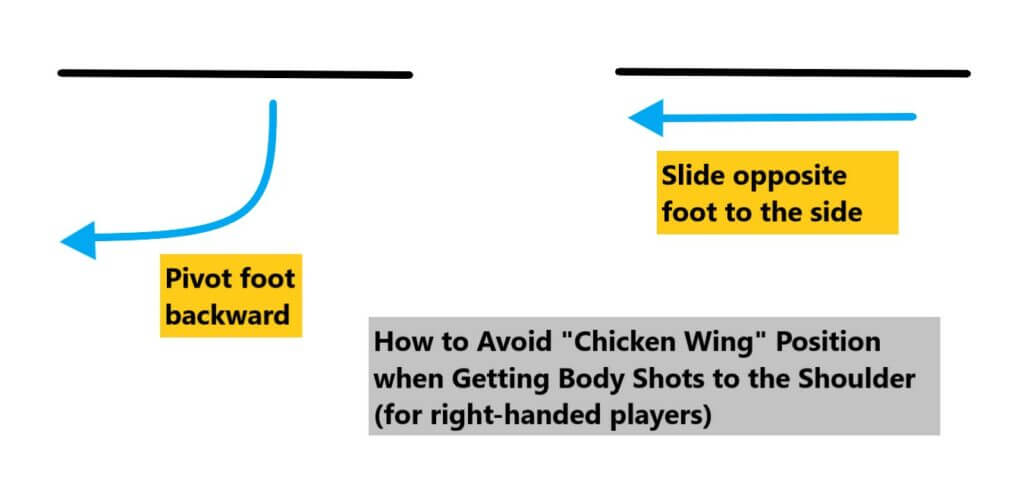Have you ever heard the term “chicken wing” when playing pickleball? It’s a form that no pickleball player would want to have during a match, and this may happen when a player finds themselves dealing with body shots to the shoulder. Fortunately, such disadvantage can be avoided. Let’s find out how.
At some point, pickleball players may find themselves struggling from body shots to the shoulder, specifically on their dominant/hitting arm. As a response to these shots, a pickleball player may attempt to do a backhand, bending their arm upward with the paddle face in front of their chest, similar to an awkward chicken wing position. With such disadvantageous shot, there is a high chance that the ball can go directly to the net or pop up toward the opponent. In addition, finding the sweet spot and correct angle of the paddle can be hard. Further, the player assumes a weak body position, which is another disadvantage for them. Lastly, with the “chicken wing” position, the player cannot fully control their shot.

To avoid the “chicken wing” position, players should switch to their forehand and pivot backward the foot on the same side of their dominant arm to adjust their body and be able to hit the ball. Another way to execute the forehand shot is to slide a foot opposite the dominant arm, along with the 45 degree pivot of the other foot, to give room to the body and allow stretching of the arm. Adjusting the body and arm with proper footwork will give players additional control and power when hitting the ball.
Given that pickleball players do not know when they will get attack by body shots to the shoulder, it important to practice the above drill to increase one’s alertness and tune the body and feet in adjusting under such situation. The point of training is to develop muscle memory, which will enable pickleball players to counteract body shots without thinking too much. Finally, “chicken wing” is no sight to behold so players should really allot time to practice their body adjustment and footwork.
